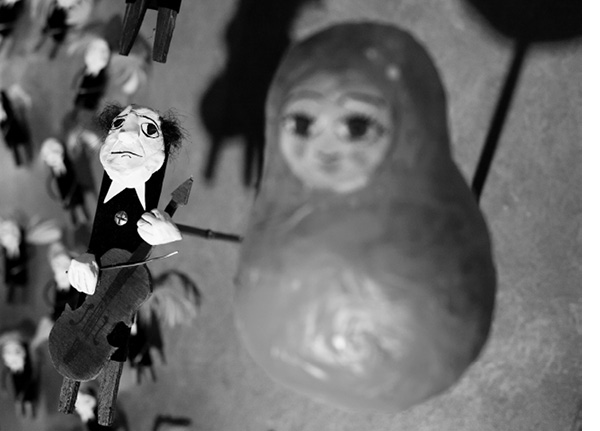
OPUS
first performed on March 24, 2013
Centre culturel de Vivoin, Vivoin, France
performed fifteen times in 2013
HUBERT JÉGAT, GRÉGORY TRAN
Vivoin, France
259544974c259544974r259544974e259544974a259544974t259544974u259544974r259544974e259544974s259544974.259544974h259544974j259544974@259544974g259544974m259544974a259544974i259544974l259544974.259544974c259544974o259544974m
cie.creatures.free.fr
OPUS
HUBERT JÉGAT, GRÉGORY TRAN
This performance is an opportunity for a young audience (three to six years of age) to discover the music of late 19th century Russia, which is used as the focal point for an original work of puppet theater. The music draws from the fantastic, the ghostly, the frightening and the supernatural, as well as from the repertoire of Russian ballet, principally by The Five: Balakirev, Rimsky-Korsakov, Borodin, Mussorgsky and César Cui. Traditional music combining eastern and western elements is also an inspiration.
The semi-circular stage presents the audience with an empty orchestra pit littered with instrument cases of another era, vestiges of a grander orchestral tradition of which only four musicians remain. Most of the mechanisms installed in the instrument cases are based on rotation. The central stage is motorized and turns the musicians in a fashion reminiscent of whirling dervishes or rotating phonographs. The spectators are thus invited into this world populated by vagrant musicians and steeped in the crossing of eastern and western traditions.
At the back of the stage is a giant double-bass case containing the original orchestra in miniature and opening like a matryoshka doll, immersing the spectators in the history of the quartet. In the other cases, effigies of ballerinas dance to the music, mounted on turntables whose movement mimics that of classical ballet. Behind the musicians is a black curtain, acting at once as a theater curtain and a cinema screen. The mix of shadows (objects, musicians) and projected images transports the audience to the early cinema, which emerged at the same time as the music being played. The image does not so much illustrate the music as add a dimension of light, color and shape. Using these basic tricks and illusions from another century as a starting point, we can recreate and remaster them using the computer technologies of today. We are thus able to reinvent a texture, a rhythm, in the projected images that combine the history of early cinema with the flexibility of modern digital image manipulation.